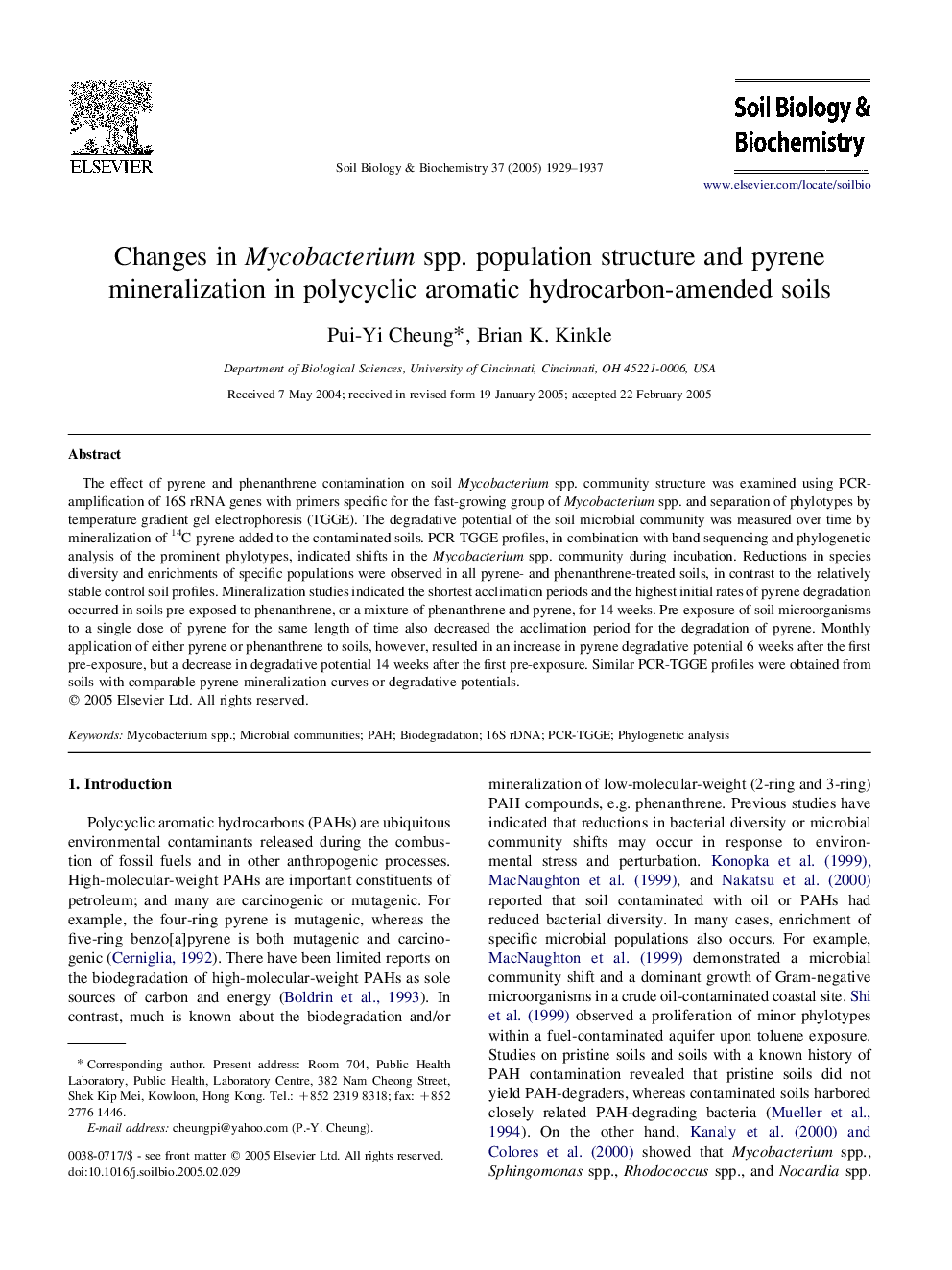| Article ID | Journal | Published Year | Pages | File Type |
|---|---|---|---|---|
| 10846271 | Soil Biology and Biochemistry | 2005 | 9 Pages |
Abstract
The effect of pyrene and phenanthrene contamination on soil Mycobacterium spp. community structure was examined using PCR-amplification of 16S rRNA genes with primers specific for the fast-growing group of Mycobacterium spp. and separation of phylotypes by temperature gradient gel electrophoresis (TGGE). The degradative potential of the soil microbial community was measured over time by mineralization of 14C-pyrene added to the contaminated soils. PCR-TGGE profiles, in combination with band sequencing and phylogenetic analysis of the prominent phylotypes, indicated shifts in the Mycobacterium spp. community during incubation. Reductions in species diversity and enrichments of specific populations were observed in all pyrene- and phenanthrene-treated soils, in contrast to the relatively stable control soil profiles. Mineralization studies indicated the shortest acclimation periods and the highest initial rates of pyrene degradation occurred in soils pre-exposed to phenanthrene, or a mixture of phenanthrene and pyrene, for 14 weeks. Pre-exposure of soil microorganisms to a single dose of pyrene for the same length of time also decreased the acclimation period for the degradation of pyrene. Monthly application of either pyrene or phenanthrene to soils, however, resulted in an increase in pyrene degradative potential 6 weeks after the first pre-exposure, but a decrease in degradative potential 14 weeks after the first pre-exposure. Similar PCR-TGGE profiles were obtained from soils with comparable pyrene mineralization curves or degradative potentials.
Related Topics
Life Sciences
Agricultural and Biological Sciences
Soil Science
Authors
Pui-Yi Cheung, Brian K. Kinkle,
